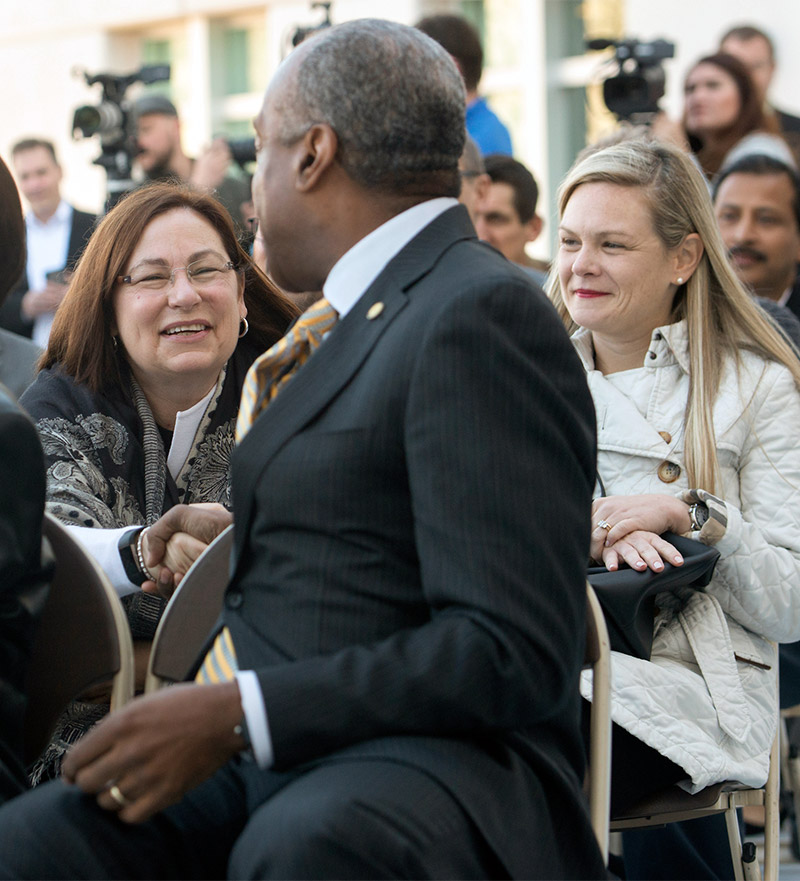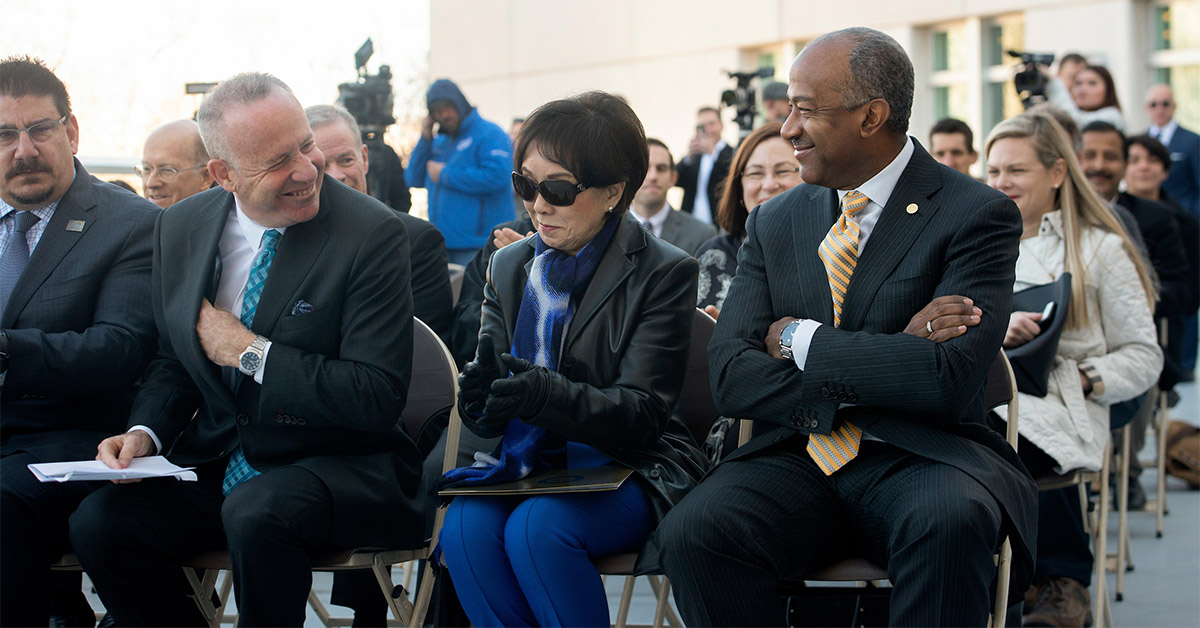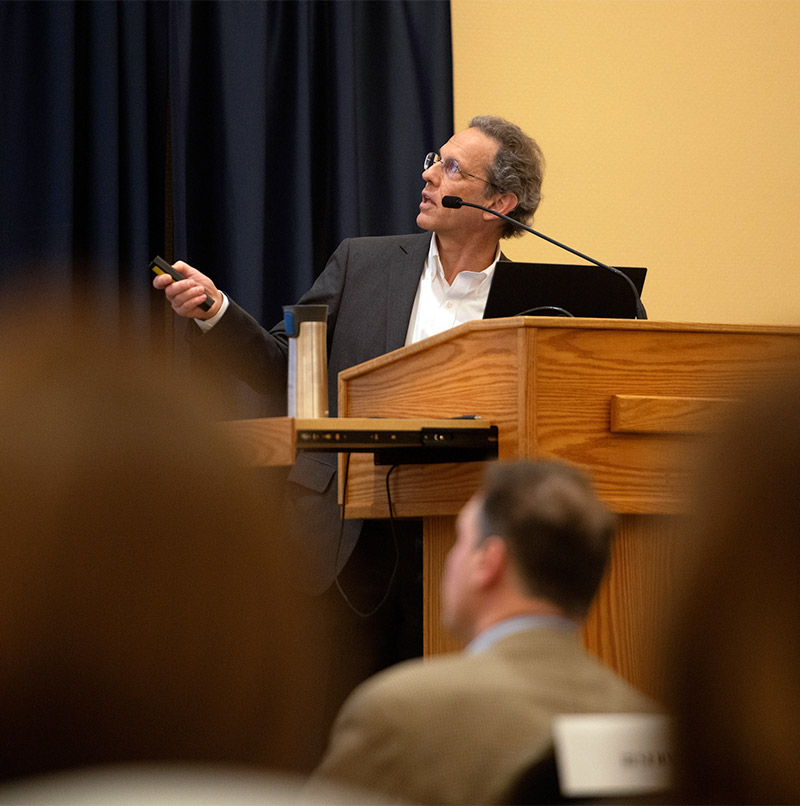The public got a glimpse of an early Aggie Square collaboration last week, but more important, saw the kind of inclusive efforts that will drive the project.
For example, as announced at a news conference Thursday (Feb. 21) on the Sacramento campus, UC Davis will collaborate with the tech giant IBM in an Aggie Square launch facility, to be housed in a newly leased building on Stockton Boulevard.

“I couldn’t be more pleased our concept for Aggie Square is attracting attention — and more importantly, it’s attracting business,” Chancellor Gary S. May said at the news conference, which took place a short distance from the planned site of Aggie Square, an innovation hub along the Stockton-Broadway corridor where UC Davis programs will share space with private companies and community organizations.
“We’ve made a lot of progress in a very short period of time,” said May, who joined with Sacramento Mayor Darrell Steinberg and other elected officials in unveiling the Aggie Square site last April. “I’d like to think that’s because you can’t stop the momentum of a good idea.”
Kim Hewitt, client director with IBM, said: “Thank you all for making us feel welcome and allowing us to be part of the ground floor of this ground-breaking effort here in Sacramento.”
The launch facility will house Aggie Square staff and IBM personnel along with representatives of the UC Davis Office of Public Scholarship and Engagement. The groups will have access to a demonstration space to host events and showcase innovations and collaborative projects.
Benefits will extend beyond project boundaries

Aggie Square will benefit more than just UC Davis and the university’s immediate partners, speakers said at the news conference.
“This economic development and job growth is not meant to stop at the confines of UC Davis and Aggie Square,” Rep. Doris Matsui (D-Sacramento) said.
Sacramento Vice Mayor Eric Guerra said the high-tech jobs coming to Aggie Square will benefit members of the community. “No longer will our youth who are inspiring in science and technology have to leave Sacramento to experience the opportunity for science and education,” he said.
Mayor Steinberg said he hopes to ensure young people from Sacramento are “first in line for these jobs.”
Transit and collaboration explored
Collaboration was also a central theme at an Aggie Square town hall held on the Davis campus two days prior.
Bob Segar, associate vice chancellor for campus planning who also serves as the Aggie Square planning director, said the project will create more than jobs, and will reflect the full breadth of work the university does.
“Aggie Square is emerging as this no-boundary space where the provost and faculty are thinking about new ways of providing undergraduate programs that wouldn’t be possible on the existing campus,” he said.

He said some of the university’s work would also be showcased in public spaces housed in mixed-use buildings on the Aggie Square campus.
Also discussed at the town hall was how students will traverse the causeway to get to and from Aggie Square.
Planners detailed the electric buses that will connect the Davis campus, Aggie Square and downtown Sacramento, saying they will depart every 15 minutes during peak hours and every half-hour the rest of the day.
Keith Baar, a professor of neurobiology, physiology and behavior, urged planners to include Wi-Fi on the buses to allow students to work while they ride, and make the routes as direct as possible so they do not interfere with other activities and commitments.
Others at the town hall urged organizers to consider adding a child care center, to embrace opportunities available with international companies located in Sacramento, and to add a position focused on connecting students with nonprofits.
“Students want to learn, but they also want to serve,” said Ken Barnes, assistant director of the Internship and Career Center.